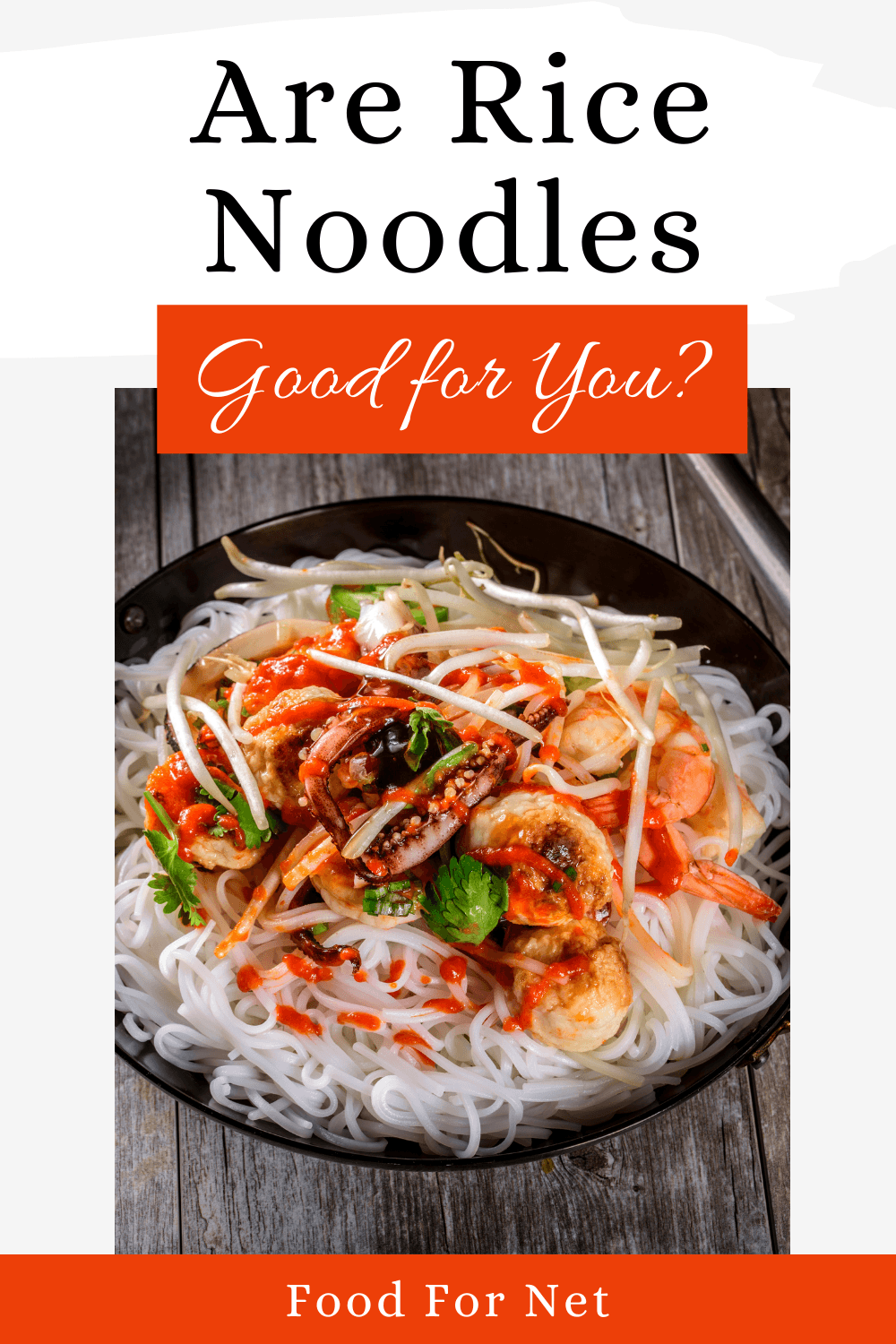
Rice noodles turn up all the time in Asian recipes. They’re easy to find and use, are often inexpensive, plus they complement many types of meals. They’re naturally gluten free too, so they can seem like this an amazing ingredient. So are rice noodles good for you, or do we just really want them to be?
To answer that question, we need to take a close look at the nutrients and macronutrients in rice noodles, along with some other key features. We’ll also compare rice noodles to other types of noodles.
Remember, though, that you’re generally not eating rice noodles on their own. They’re mostly used as an ingredient in complex dishes, ones that may also include vegetables and protein. The entire dish will influence your health more than rice noodles themselves will.
Are Rice Noodles Good For You?
- Rice Noodle Nutrition
- Benefits Of Rice Noodles
- How Rice Noodles Could Be Harmful
- Are Rice Noodles Healthier Than Other Noodles?
- What About Brown Rice Noodles?
- How Do You Use Rice Noodles?
- Final Thoughts
Rice Noodle Nutrition
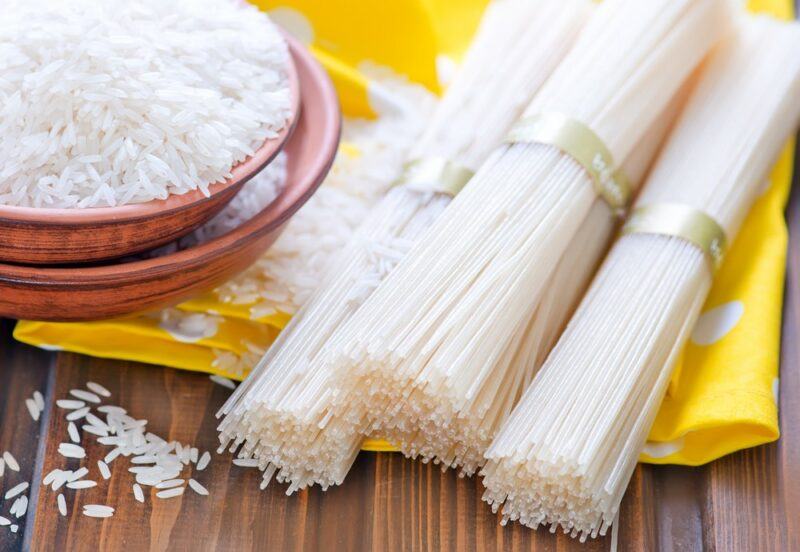
Rice noodles are normally made using rice flour and water, which should give you a good idea about what to expect from them. There may be some additives or extra ingredients, but these are kept to a minimum. While the nutritional profile varies from brand to brand, you’re generally looking at something like this (for a 2 ounce serving):
- 200 calories
- Fat: 0.5 grams
- Carbs: 45 grams
- Sugars: <1 gram
- Fiber: 0 grams
- Protein: 4 grams
Some brands do offer some fiber, perhaps a gram or two per serving. However, the amounts aren’t ever very impressive.
While the noodles aren’t particularly high in nutrients, they do provide some selenium, copper, and manganese.
Benefits Of Rice Noodles
They’re Gluten Free
Regular noodles rely on wheat flour, so they contain a decent amount of gluten. This is a serious issue for anyone with celiac disease or a gluten sensitivity.
Rice noodles are naturally gluten free, as rice itself doesn’t contain gluten. Swapping from regular noodles to rice noodles might even be enough to make a dish gluten free.
Plus, rice noodles have a similar texture to regular noodles – helping you to create gluten free noodle dishes that are just as good as those with gluten.
That said, if you’re highly sensitive to gluten, it’s important to look for products with a gluten free guarantee. Doing so helps you avoid rice noodles that have traces of gluten due to cross contamination.
They Provide Selenium
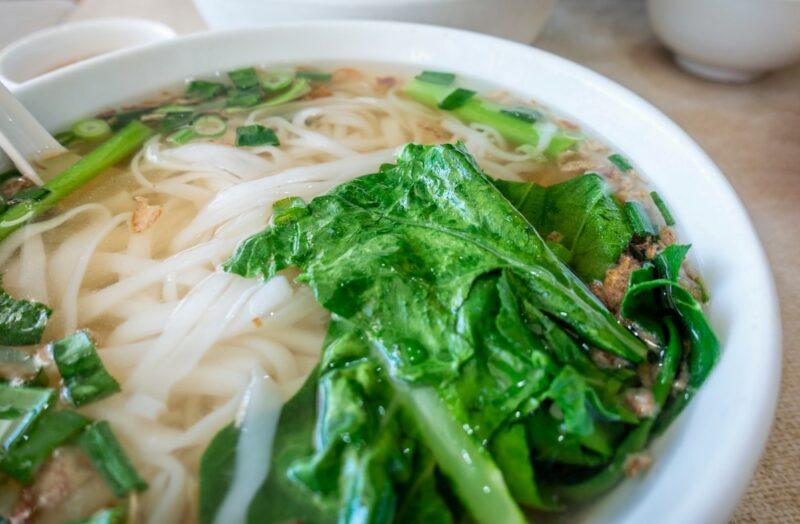
Selenium is the most notable nutrient in rice noodles. Sometimes you’re getting around 15% of your daily needs from a single serving.
This is helpful as selenium is highly relevant to your immune system, thyroid function, and metabolism. Selenium also functions as an antioxidant. As such, it could help to decrease oxidative stress and potentially protect your health.
Naturally Low In Sodium
Rice noodles are low in sodium as well. This is excellent news, given that many of us are consuming too much sodium currently. High levels of sodium intake can lead to a variety of health issues, including high blood pressure and increased heart disease risk.
However, you’ll need to pay attention to how you’re using rice noodles. Many noodle recipes rely on salt for seasoning and can easily end up high in sodium.
This is particularly true for dishes like pho, where the sodium content can quickly get ridiculous.
They Can Help You Eat Well
Carb rich foods shine as a vehicle for healthy ingredients. You’ll see this pattern all the time with rice and rice noodles, as many recipes include plenty of fresh vegetables, along with lean meat, tofu, or some other source of protein.
Indeed, balancing out carbs, fat, and protein in the same meal may be the healthiest way to eat. The approach is certainly more powerful than eating meals that focus on just a single macronutrient.
This pattern shows that it’s important to see rice noodles as an ingredient, not a meal in their own right. So, rather than considering the pros and cons of rice noodles on their own, think about how the entire meal balances out.
They’re Low In Fat
Rice noodles are also low in fat and moderate in their protein content. This balance makes them useful if you’re trying to lose weight.
Just be sure to balance the noodles out with plenty of vegetables and some protein. The resulting meal will be much more satisfying than one that’s carb heavy.
They’re Versatile
Rice noodles don’t taste like much at all. This might sound like a bad thing, but it’s actually exceptional, as it means the noodles work well with countless dishes.
You might notice this if you check out Asian cookbooks, as rice noodles are featured again and again, in all types of meals.
That’s not all. There are also many types of rice noodles, ranging from thin vermicelli noodles all the way up to the thick ones used for pad Thai. You can even make rice noodles at home if you’re looking for something fresh and free from additives.
They’re Often Inexpensive

Finally, rice noodles can be pretty cheap. This is particularly true if you buy them in bulk, but even individual packets of rice noodles aren’t too expensive.
It’s easy to dismiss this feature, but it’s surprisingly powerful. After all, if your source of carbs is cheap, then you can spend more money on nutritious ingredients like fresh vegetables and lean protein.
How Rice Noodles Could Be Harmful
Their Carb Content
Rice noodles contain fewer carbs than wheat noodles or egg noodles, but the difference isn’t dramatic. You may still be getting more than 40 grams of carbs per cup of cooked noodles.
There’s no denying it – that’s a lot of carbs.
Carbs are often linked to health issues, like increased inflammation, and a higher risk of type 2 diabetes, obesity, heart disease, and other health issues.
Refined carbs are a particularly big problem, as they’re found in processed foods where much of the nutritional value has been lost. This is exactly what’s happening with rice noodles.
They’re Low In Fiber
Rice noodles are never amazing for fiber. Even the best brands normally just have a gram or two per serving. Other types of noodles tend to be much better.
This is an issue simply because modern fiber intake is often low. It’s surprisingly easy to be deficient in fiber, even if you’re eating vegetables regularly (partly because the optimum fiber intake is higher than many of us expect).
They Don’t Contain Many Nutrients
Rice noodles aren’t nutritionally impressive at all. The most prominent nutrient is selenium and even then you’re getting less than 20% of your daily needs in a serving.
This isn’t a big deal if you’re getting plenty of nutrients from other ingredients. However, it is relevant if you’re not using many toppings with your noodles.
Are Rice Noodles Healthier Than Other Noodles?
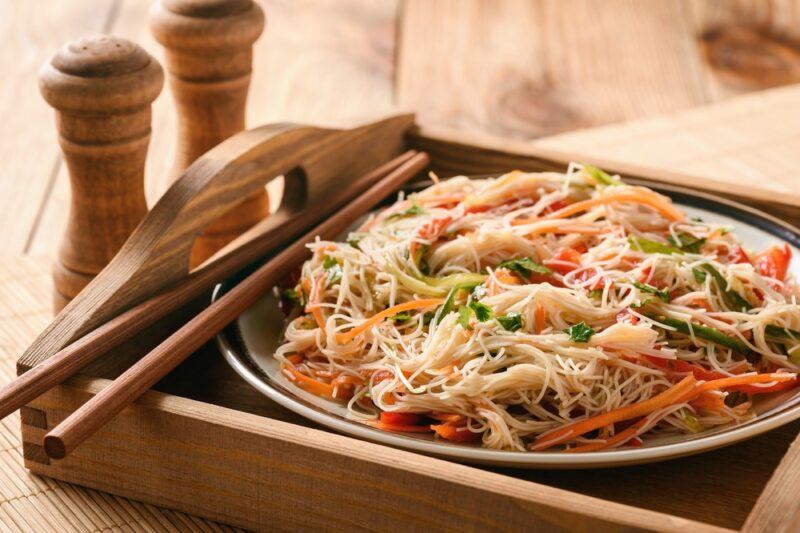
Swapping wheat noodles out for rice ones sounds like an easy way to improve your health. Yet, this isn’t necessarily the case at all.
Rice noodles are gluten free and avoid egg, which are helpful features. That’s about it though. In fact, rice noodles are actually lower in nutrients and protein than regular wheat noodles.
Rice noodles fare even worse if you compare them to other types of noodles.
For example, zucchini noodles are much lower in carbs, offer more nutrients, and still give you a similar amount of fiber. Then there are shirataki noodles, which are free from digestible carbs, high in fiber, and very low in calories. Rice noodles are lower in calories and fat than egg noodles, but they’re still higher in carbs and lower in protein.
These comparisons don’t mean that you need to avoid rice noodles entirely. Not at all. They’re still a useful ingredient in some situations.
It’s just important to remember that they’re really not that nutritious.
What About Brown Rice Noodles?
Rice noodles are normally made from white rice, but some brands take a different approach and turn to brown rice instead.
Brown rice noodles tend to be higher in fiber and more nutritious, which can make them healthier than white rice versions. You do, however, end up with a slightly chewy texture that not everyone enjoys.
While brown rice noodles are a bit better nutritionally, they’re still high in carbs and have limited benefits.
How Do You Use Rice Noodles?
Rice noodles are a little counterintuitive. You don’t boil them like you do wheat noodles. Doing so tends to make them mushy and not appealing at all.
Soaking the noodles is much more common. You might just need to do so for a few minutes, but thicker rice noodles can take half an hour of soaking or even longer.
After this, the noodles can be used as-is or perhaps flash fried.
Don’t worry if the approach sounds confusing – rice noodle packets should always tell you exactly what you need to do to get the most out of the product.
Final Thoughts
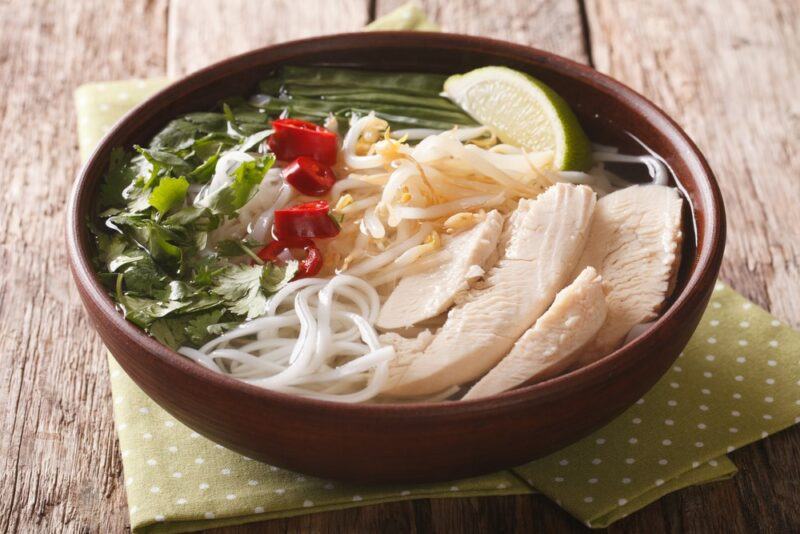
On their own, rice noodles aren’t that amazing. They’re too high in carbs and aren’t packed with nutrients.
Still, you don’t generally eat rice noodles on their own. The noodles are more often used as part of a complex dish, one that’s packed with plenty of vegetables and seasoning ingredients.
In this context, rice noodles are helpful, as they bring together a delicious and healthy meal that is packed full of nutrients, protein, carbs, and fiber.
The real question here is what do you think about carbs? If you’re concerned about carbs and see them as unhealthy, then rice noodles will never be a good choice. They don’t have much to offer beyond carbs. If you’re comfortable with carbs as part of a healthy diet, then rice noodles work well. They mightn’t be the absolute healthiest types of noodle out there, but if they help you to create delicious and nutritious meals, does this really matter?
Frequently Asked Questions
Are Rice Noodles Hard To Digest?
Not at all. Our bodies digest rice noodles quickly and easily, particularly if you’re focusing on regular ones, rather than brown rice noodles. The only catch is that they need to be fully cooked. Undercooked rice noodles could cause digestive issues.
Rice noodles are also fairly low in fiber. This helps make them easier to digest as well. There’s a catch though, as our bodies rely on fiber for digestive health. So, focusing too heavily on low fiber foods could end up being harmful rather than helpful.
Are Rice Noodles Good For Diabetics?
Most of the time, rice noodles are a poor choice for diabetics, as they contain so many carbs. Their glycemic index is often higher than egg noodles too, which means they impact your blood sugar faster. However, the blood sugar impact is strongest if you’re eating rice noodles on their own (which you probably aren’t). Consuming them with plenty of vegetables and some protein can decrease the blood sugar impact considerably. If you do this and keep your portion sizes small, you should be able to enjoy rice noodles periodically.
Are Rice Noodles Better For You Than Pasta?
Despite being gluten free, rice noodles aren’t particularly healthy. Their balance of calories and nutrients is actually fairly similar regular pasta. Brown rice noodles are a slightly better choice, but so too is whole grain pasta.
Realistically, rice noodles are only healthier than pasta if you’re sensitive to gluten. If you’re not, you can choose noodles or pasta based on the meal in question.
Are Rice Noodles Inflammatory?
Rice noodles are made using refined grains and they’re high in carbs. Those features mean they could easily cause inflammation.
Their lack of gluten means that they mightn’t be as bad for inflammation as pasta, but we don’t know this for certain. To avoid the issue, you may want to focus on brown rice noodles and keep your portion sizes low.
Are Rice Noodles Gluten Free?
Most of the time, yes, rice noodles are completely free from gluten. Many products simply rely on rice flour and water, with little else added.
However, it’s still important to check the ingredients label, as this isn’t guaranteed. Some companies may add a gluten-containing ingredient to help with the texture or flavor of the noodles.


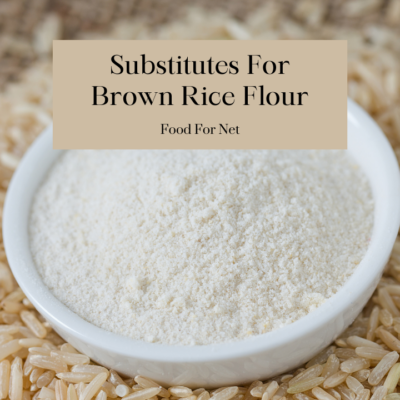



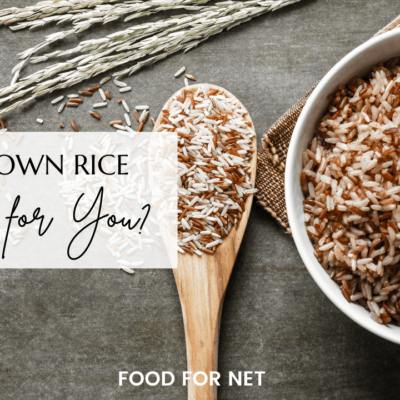
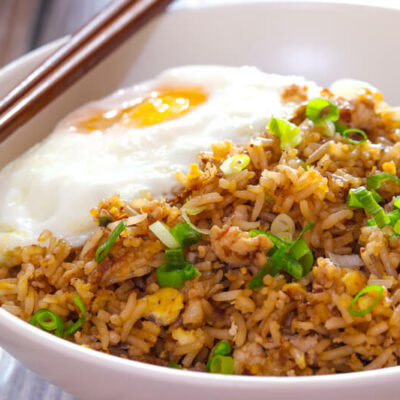

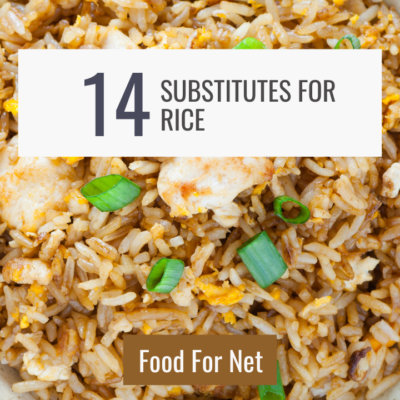

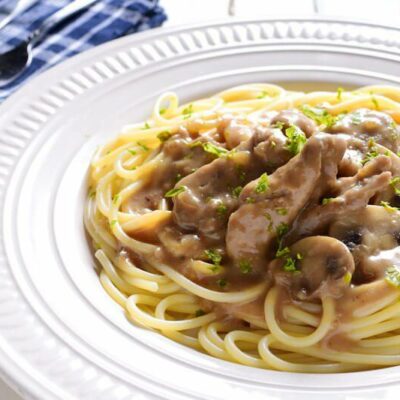

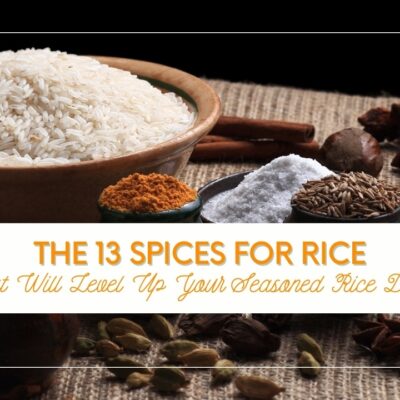
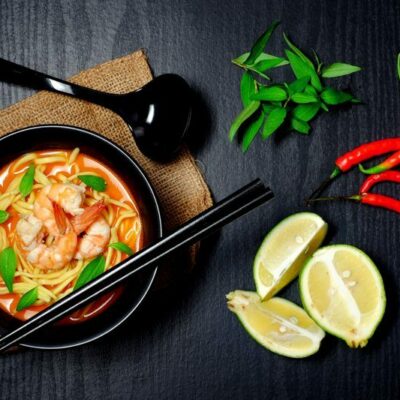
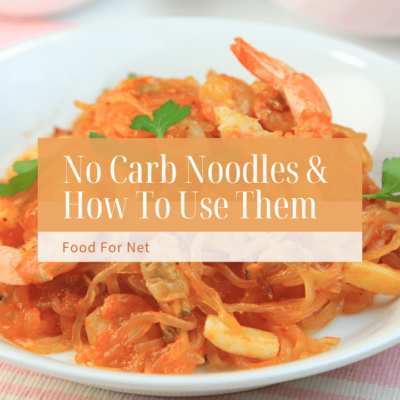

 Are Mussels Good For You?
Are Mussels Good For You?
Leave a Reply